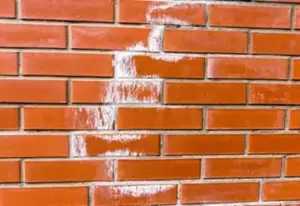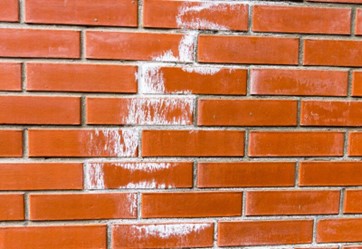Should You Worry About That White Stuff on Your Brick Wall?

Finding a mysterious white substance on your brick walls, particularly following a bout of rainfall, can produce a blend of curiosity and apprehension for homeowners and building caretakers. This phenomenon, commonly referred to as efflorescence, appears as a powdery or crystalline deposit on the surface of masonry materials such as brick, concrete, or stone. Understanding what causes this occurrence, evaluating its impact on the structural and aesthetic aspects of your property, and adopting effective strategies for its management and prevention are essential for maintaining the health and appearance of brick buildings.
What is Efflorescence?
Efflorescence is a term derived from the French word fleurir, which means to bloom or to flower out, describing the way these white deposits seem to bloom on the surface of masonry. It occurs when water infiltrates brick, concrete, or stone, dissolving natural salts and minerals. As the water moves toward the surface and evaporates into the air, it leaves behind these salts, creating a white, powdery residue that can range from barely noticeable to quite pronounced, depending on the concentration of salts and the amount of water involved. This process is particularly common in areas exposed to wet conditions, making appearances of efflorescence after rainstorms a frequent sight.
Is It A Cause For Concern?
The appearance of efflorescence on brick walls often leads to questions about the structural integrity of the masonry involved. While it’s primarily an aesthetic issue, it serves as a natural indicator of moisture movement through the material. In most instances, this doesn’t immediately compromise the structure’s integrity, but it’s important to remain vigilant.
- Aesthetic Impact – While not harmful to the bricks themselves, efflorescence can damage the visual appeal of the structure, leading to a perceived lack of upkeep and potentially affecting property values.
- Indicator Of Moisture Issues – Persistent or heavy efflorescence can be a symptom of excessive moisture within the walls. This could be an indicator of deeper issues such as inadequate drainage, plumbing leaks, or compromised waterproofing measures.
- Potential For Damage – In extreme cases where moisture intrusion is significant, the freeze-thaw cycle associated with the trapped moisture can lead to spalling or cracking of bricks, posing a more serious threat to the structural integrity of the building.
Managing Efflorescence
The management of that efflorescence entails both the removal of existing deposits and the implementation of measures to prevent its recurrence, ensuring the longevity and beauty of your brickwork.
- Safe Removal Techniques -The initial step involves the careful removal of the efflorescence deposits. Techniques such as general dry brushing can effectively remove loose deposits without damaging the brick surface. For more stubborn efflorescence, a solution of mild detergent and water applied with a soft bristle brush can be used. In extreme cases where these methods are insufficient, specialized masonry cleaning agents may be used, though it’s essential to carefully follow the manufacturer’s instructions to avoid harm to the masonry.
- Preventive Measures – Addressing the underlying moisture issue is important in preventing the reappearance of efflorescence. This includes effective exterior water management through the maintenance of gutters and downspouts, proper landscaping to facilitate water runoff away from the building, and the application of appropriate sealants or waterproofing treatments to vulnerable masonry surfaces.
- Regular Maintenance And Inspection – Establishing a routine of regular inspection and maintenance can help identify and rectify potential moisture issues before they lead to efflorescence. This proactive approach can significantly reduce the likelihood of its occurrence and the associated risk of moisture damage to the masonry.
Should You Be Worried?
Efflorescence, while mostly a cosmetic concern, should not be completely dismissed. Its presence signifies the movement of moisture through masonry, acting as a natural alert system for potential issues that could escalate if ignored. Monitoring for efflorescence and addressing any underlying problems promptly can prevent more serious complications, ensuring the structural and aesthetic integrity of your property remains intact.
Conclusion
While the white powdery substance often observed in brick walls after rain, known as efflorescence, is largely an aesthetic issue, it serves as an important indicator of moisture within the structure. Understanding its causes, implications, and the measures required for its management and prevention is essential for every property owner or caretaker. By adopting a vigilant approach towards maintenance and moisture control, the beauty and durability of your brick masonry can be preserved.
Where to Go for Help
With a focus on various foundations such as poured concrete and block, Everdry Waterproofing of Wisconsin is recognized for its patented cutting-edge solutions for basement seepage problems. We are skilled in the removal of efflorescence and other moisture issues. Our customized approach, rooted in our commitment to integrity and client satisfaction, has made us a leader in the industry since 1989, with an ever-expanding base of satisfied customers and referrals.
If you would like more information about the products and services we offer, contact us here.
Ready to Get Started?
Contact Us Today to Schedule a No Pressure, No Obligation, Free Quote!

